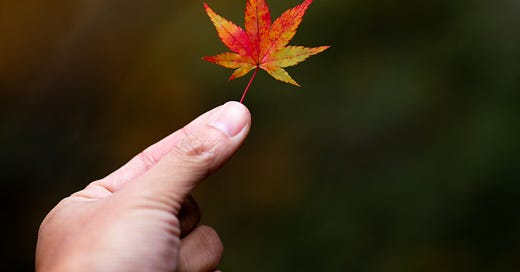As the summer heat fades and a crispness begins to permeate the air, Japan enters one of its most cherished seasons—autumn. While each season holds a special place in the heart of Japanese culture, autumn, with its vibrant hues and contemplative atmosphere, has a unique ability to draw people closer to nature and each other. Central to this seasonal celebration is momijigari, the time-honored tradition of autumn leaf viewing, which invites people to pause, reflect, and immerse themselves in the beauty of the changing landscape.
A Palette of Red, Orange, and Gold
Momijigari, literally meaning “hunting for red leaves,” is a practice that dates back centuries. The tradition involves seeking out the most stunning displays of autumn foliage, whether in remote mountain temples, serene gardens, or even along urban streets lined with golden ginkgo trees. This ritual is more than just an appreciation of nature; it’s an opportunity to engage with the season on a deeper level.
In Kyoto, one of the most iconic destinations for momijigari, the ancient temples and gardens are transformed by a fiery tapestry of maple leaves (momiji). The vibrant reds and oranges are reflected in tranquil ponds, creating scenes of breathtaking beauty that have inspired poets and artists for generations. In Tokyo, the contrast between the modern cityscape and the natural beauty of places like Rikugien Garden or Mount Takao offers a unique urban twist on this age-old tradition.
Mindfulness in Modern Life
In today’s fast-paced world, where technology often dominates our attention, momijigari offers a rare chance to slow down and reconnect with the natural world. The act of seeking out autumn leaves encourages mindfulness, inviting people to step away from their screens and immerse themselves in the sensory experience of the season. The rustle of leaves underfoot, the crisp air, and the play of light through the canopy of trees all contribute to a profound sense of presence and calm.
For many, momijigari is a form of self-care—a way to find balance in the midst of modern life’s demands. It’s not uncommon to see office workers taking a detour through a park during their lunch break, or families making weekend trips to the countryside to enjoy the foliage. The tradition serves as a gentle reminder that no matter how busy life becomes, there is always time to appreciate the beauty around us.
Urban Momijigari: A New Tradition
While momijigari is often associated with Japan’s natural landscapes, it has also found a place in the heart of its bustling cities. Urban parks and gardens across Japan have embraced the tradition, offering evening light-ups and special events to enhance the autumn experience. In cities like Tokyo and Osaka, where the pace of life can be relentless, these urban oases provide a much-needed escape—a space to breathe, reflect, and enjoy the season’s splendor.
In recent years, momijigari has even taken on a new life in digital spaces. Social media platforms are filled with snapshots of the season’s best colors, shared by people eager to document and celebrate the fleeting beauty of autumn. This digital extension of the tradition allows people to connect over their shared love of nature, even if they can’t physically be in the same place.
A Season of Reflection
Autumn in Japan is more than just a visual feast; it’s a season of reflection. The falling leaves, with their brilliant but transient colors, remind us of the impermanence of life—a theme that resonates deeply in Japanese culture. Momijigari encourages us to embrace this impermanence, to find beauty in the fleeting moments, and to carry forward a sense of calm and appreciation as we move through the rest of the year.
As we navigate the complexities of modern life, momijigari offers a timeless tradition that connects us to the natural world and to each other. It’s a ritual that invites us to slow down, look closely, and find joy in the simple yet profound changes that each season brings. So, as the leaves begin to turn, take a moment to step outside, breathe in the crisp autumn air, and let the beauty of momijigari guide you through the season.



